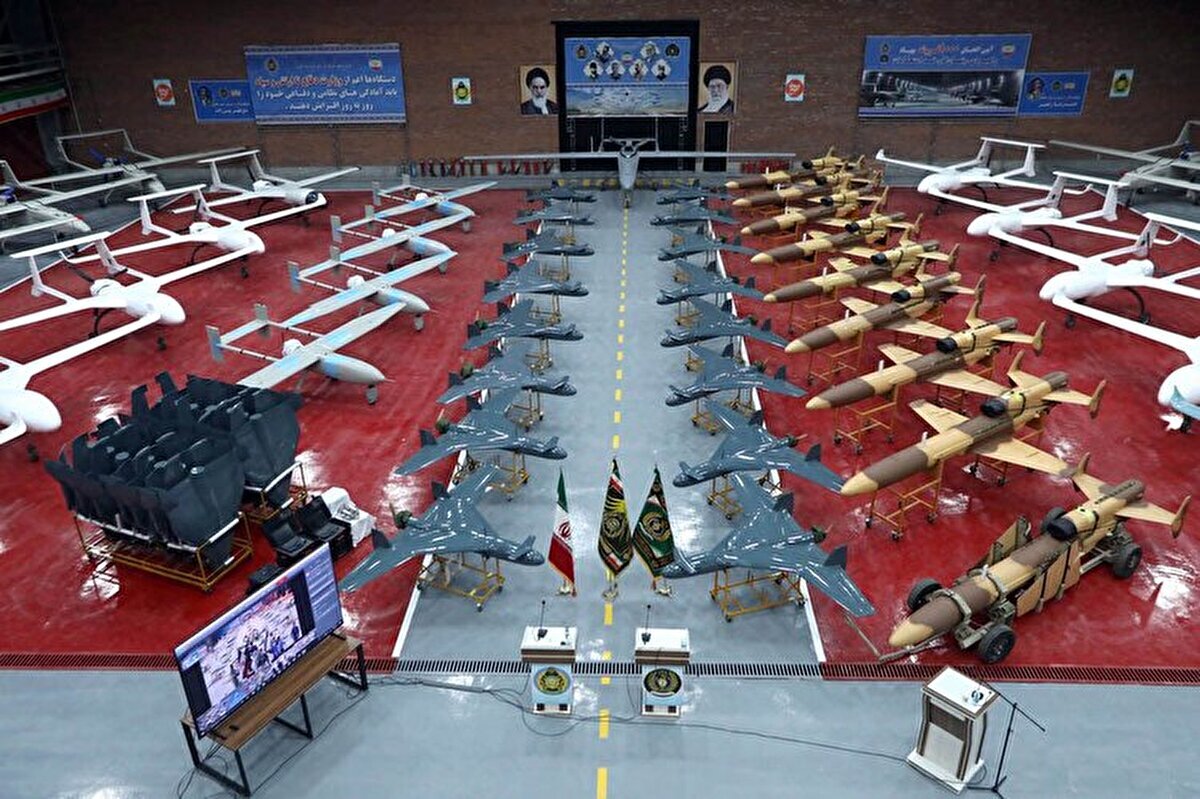The Role of Arms Sanctions in Iran's Military Self-Sufficiency
TEHRAN (Defapress) - The economic and arms war refers to the comprehensive sanctions imposed by the United States against the Iranian nation and the Islamic Republic system, which have created a unique situation in Iran over the past 15 years.

Arms and military sanctions are among the most significant tools of international pressure against countries, aimed at restricting access to military technology and advanced equipment. While these sanctions create short-term security challenges, in the long run, they can become a driving force for strengthening defense self-sufficiency.
Over the past four decades, the Islamic Republic of Iran has faced the harshest arms sanctions. However, instead of weakening the country's defense capabilities, these restrictions have led to remarkable growth in domestic military industries and the acquisition of advanced technologies.
Despite all limitations and enemy pressures, Iran’s armed forces have stood firm against adversaries over the past 46 years and have even shared their military products with allied nations.
Following the victory of the Islamic Revolution and the establishment of the Islamic Republic, Iran was subjected to extensive arms sanctions by the West. These sanctions were first imposed by the U.S. and later enforced internationally through UN Security Council resolutions.
Over the past 46 years, the enemy has attempted to expand arms sanctions against Iran using the following tactics:
1. Banning exports of advanced military equipment in cutting-edge technologies
2. Prohibiting the sale of advanced fighter jets, such as the J-10, J-16, Su-30, and Su-35
3. Blocking the supply of critical spare parts for Iran’s existing fighter jets (e.g., the F-14 Tomcat) to disrupt maintenance operations
4. Preventing the sale of ballistic missile fuel (e.g., ammonium perchlorate) to hinder missile testing (medium/short-range)
5. Obstructing the modernization of light, semi-heavy, and heavy military equipment
6. Restricting Iranian scientists to disrupt military R&D
7. Pressuring allied nations (e.g., China and Russia) to avoid military cooperation with Iran (e.g., U.S. interference in delaying the delivery of the S-300 missile system, which was finally delivered after years of obstacles)
Despite all hardships, the Islamic Republic of Iran has remained steadfast in expanding its military power and neutralizing arms sanctions. Today, it has achieved significant success in all mentioned fields.
Sanctions forced Iran to focus on domestic production rather than imports. In the past, Iran relied on American and European weapons, but after the severance of these ties, the country’s defense industry rapidly advanced. Long-term planning was institutionalized through organizations like the Ministry of Defense and the Aerospace Industries Organization, while military research expanded.
While the U.S. may have succeeded in obstructing the delivery of advanced military systems, failed to stop Iran's military progress. Witnessing these obstacles, Iran stood on its own feet and developed some of the most advanced asymmetric warfare systems.
A look at Iran’s missile and drone industry reveals that the Islamic Republic has established credible deterrence against its enemies by developing various ballistic missiles and large-scale missile cities.
One of the most significant outcomes of sanctions has been increased investment in R&D. Iran realized that to acquire sensitive technologies, it must rely on domestic expertise. Research centers such as the Defense Technology and Science Research Center, along with specialized universities under the Ministry of Defense, have played a key role in localizing military technology.
The Islamic Republic of Iran Air Force has extensively upgraded its fleet, ensuring operational readiness. Today, Iran has reached a point where most of its military equipment is domestically produced. As stated by the Commander of the IRGC Aerospace Force: "Even if they build walls around this country, the defense industry, including missile production, will never stop."
In missile defense, indigenous systems such as the Bavar-373 and 15 Khordad now operate alongside the S-300, carrying out strategic missions across defense sites.
Now that the arms sanctions period has ended, purchasing military equipment may seem feasible. However, Iran must remain focused on developing advanced systems; a priority actively pursued by the armed forces and the Ministry of Defense.
